Want to build your own gaming PC but don't know where to start? Over the next few weeks, we're bringing you the essential info on how to pick the best PC parts for your budget. This week, we're kicking things off with arguably the most important part of any gaming PC: the GPU.
So, you've decided to build your own gaming PC: welcome to the wonderful world of Steam sales, amazing free-to-play games, and lording it over your console-owning friends with superior keyboard and mouse controls. Yes, a gaming PC is a wonderful thing, but going down the build-your-own path can be intimidating, particularly if you're new to the process. It's simple enough, though, once you know where to start--and for a gaming PC, that's with the graphics processing unit, otherwise known as a GPU.
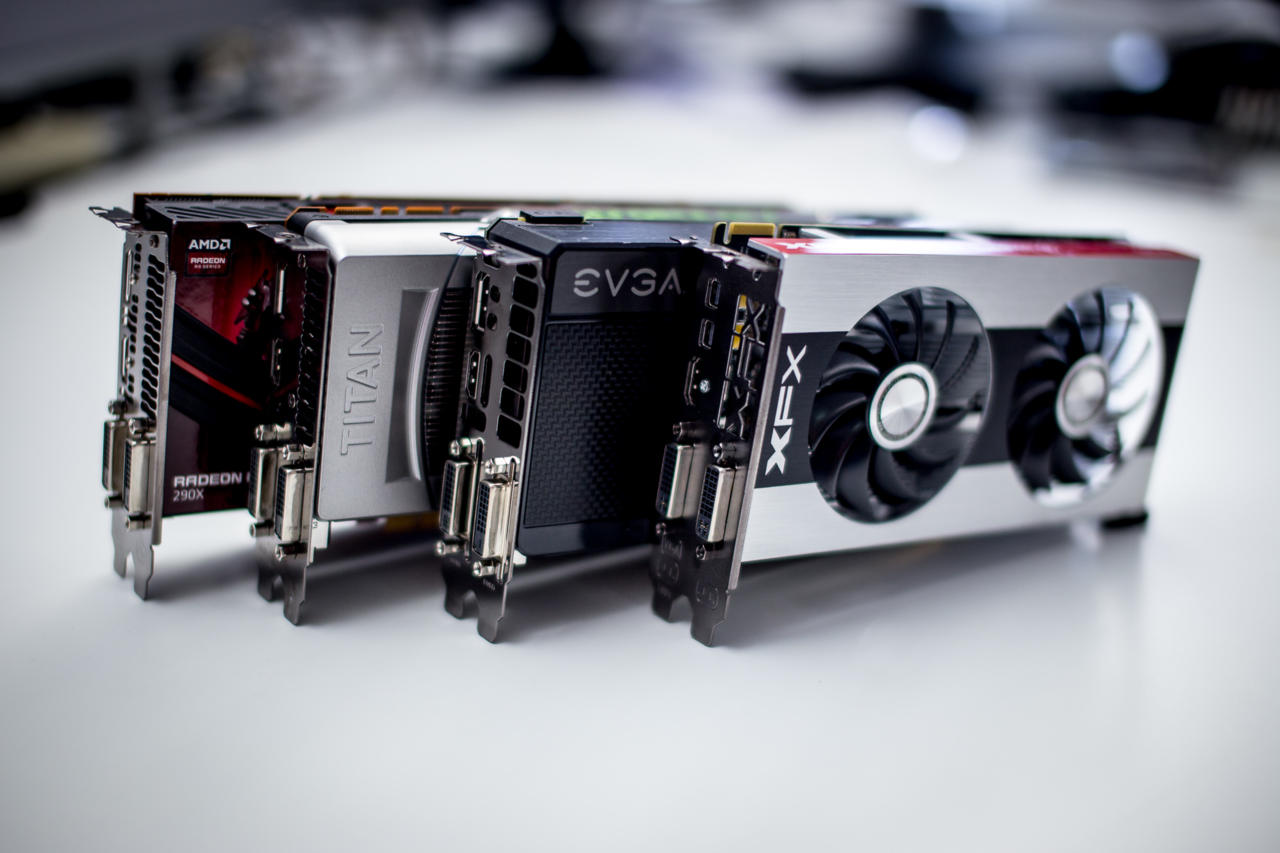
Integrated or Dedicated?
The GPU is the part of a PC that converts all those ones and zeros of game code into the colourful visuals you see on your monitor or TV; it's also one of the most expensive components in any PC build. GPUs usually take the form of a separate add-in card that you slot into your PC, although these days, many PCs--particularly laptops--use GPUs that are integrated into the central processing unit. We're going to be covering what to look for in a CPU at a later date, but generally, integrated graphics are best at rendering 2D graphics or displaying Windows and text, rather than the pushing out the 3D visuals of more sophisticated games.
Unless you're planning to build a small, low-power PC, or are on an extremely tight budget, a dedicated GPU is the best choice for gaming. There are myriad options when it comes to dedicated GPUs, but nearly all of them come from just two companies: AMD and Nvidia. Both offer GPUs that start from as little as $30, rising to a wallet-busting $3,000 at the high end. Naturally, the more money you spend, the smoother and more impressive your games will look, but that doesn't necessarily mean the more expensive cards are the best value.
Which Is the Right GPU for Me?
Modern GPUs often sport gargantuan and confusing acronym-filled lists of features, which don't make it easy to pick the right one for your needs. But you can begin to narrow your choices down quickly, once you know what to look for. The natural starting point for any GPU purchase is picking a budget. More money usually equals more eye candy, but for most people's needs, the sweet spot tends to be in the mid-range, around the $300 mark. There you'll find cards that are plenty powerful for most modern games, don't consume obscene amounts of electricity, and will last a good couple of years at least before needing to be replaced.
Size, Power, Connections
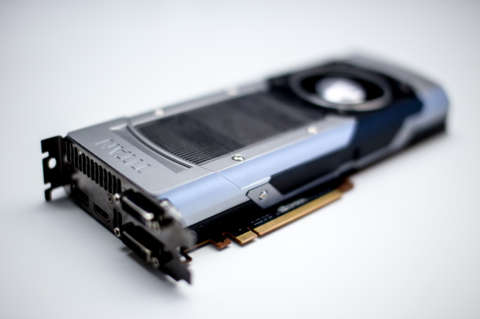
Once you've picked a budget, there are a few key things to look out for within your given price range. For starters, there are some practical considerations. Figure out what connectors you're after, whether that be HDMI, DVI, or DisplayPort, and make sure the GPU you're looking at has everything you need.
GPUs also vary in length, height, and how many expansion slots they take up in your PC. So, for example, if you're building a smaller PC with limited room, you don't want some gargantuan three-slot-wide monster that won't fit; most cases will state the maximum length of GPU that will fit. Likewise, if you're using a smaller power supply, look out for the peak power consumption of your chosen GPU (measured in watts) and make sure that--when combined with other components like the CPU--you're hitting around 50 to 60 percent of your power supply unit's capacity, which tends to be the sweet spot for efficiency, and leaves room for further expansion. Most GPUs also need to be connected to your PSU by six- or eight-pin power cables, so make sure you've got some spare cables before taking the plunge.
What to look for: The right display outputs for your monitor, a size that will fit into your chosen case, and the right power consumption for your PSU.
Speed
After that, it's all about hitting the right balance of speed, memory, and cooler design. Generally speaking, speed affects frame rate, frame latency, and input lag; memory affects resolution and image quality; and the cooler design affects how loud the GPU is when running your favourite games. For speed, there are two factors at play: the clock speed of the GPU measured in Mhz, and the number of shader cores it features. Nvidia calls its shader cores CUDA cores, while AMD calls them stream processors. Effectively, what you're looking for is the highest number of shader cores running at the highest clock speed for your budget.
It's not always as cut and dry as that: sometimes GPUs that have fewer shader cores but run at a substantially faster clock speed can perform better in certain games, while those with more cores but a lower clock speed can perform better in others. But looking at the highest number of shader cores running at the highest clock speed and review benchmarks for the kinds of games you want to run is a good starting point.
What to look for: The highest amount of shader cores running at the highest clock speed for your budget. Find out what games you're thinking of playing and check out benchmarks online.
Memory
At the cheaper end of the GPU spectrum, you might find some GPUs that actually have more memory than their expensive cousins. The thing to watch out for is what type of memory those GPUs feature, the speed they run at (again, measured in Mhz), and the memory bus width (measured in bits). The latter is especially important when it comes to GPUs, which contain multiple memory chips. As standard, a GPU can read 64 bits of information at a time from a memory chip, but to speed things up, it reads from more than one memory chip simultaneously. If it can read from two chips at a time, the memory bus width is 64x2, which equals 128 bits. If it can read from three chips simultaneously, the bus width is 64x3, which equals 192 bits and so on.
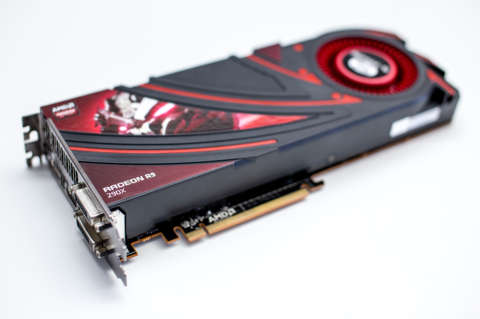
It's this bus width, combined with the memory speed, that gives you the memory bandwidth (measured in gigabytes per second: GB/s). Most GPUs will state their bandwidth in their specifications, with the general rule being that the more bandwidth a GPU has, the easier it is for a game to feed data to the shader cores, and thus run your games more smoothly. Look out for GPUs that have GDDR5 memory, which typically features a higher bandwidth, and avoid anything with older DDR3 memory if you intend on using it for gaming.
As for how much memory you need, remember that the amount of memory a card has doesn't affect its speed. The memory is used for things like loading textures and holding the frame buffer and other assets required to render a frame of your game. Higher resolutions and post-processing techniques like anti-aliasing (which removes the jagged edges from objects) increase the number of pixels that need to be rendered, and thus the amount of information that must be held in video memory. So, rather than make games run faster directly, what more video memory gives you is the option to play your games at higher resolutions and crank settings like texture quality and anti-aliasing for better image quality.
For 1080p gaming at higher settings, 2GB of GDDR5 memory is really the minimum you should be looking for, with 3GB giving you a little more headroom when it comes to cranking settings. More than that is probably overkill for 1080p, but you'll see a benefit at higher resolutions, or if you're running multiple monitors. Plus, with many games now being designed for the massive pools of memory available on the PS4 and Xbox One, it's likely minimum memory requirements will start rising soon.
What to look for: 2GB of GDDR5 as a minimum for smooth 1080p gaming, with as high a bus width as your budget allows. Be wary of GPUs that sport more memory, but with a lower bus width.
Coolers, PhysX, Mantle, and Everything Else
Even after all that, there are other things to consider. What kind of cooler do you want on your GPU? Poor cooling means your GPU has to throttle down its speed in order to avoid damage, decreasing performance. Cheaper GPUs tend to use what are known as reference coolers, that is, the manufacturer suggested minimum. With the exception of Nvidia's fantastic all-metal cooler on its GTX 770 and up, these don't tend to perform as well as those from third parties such as ASUS, which engineer sophisticated heat pipes and multiple fan arrangements. The one benefit of reference coolers is that they tend to be in a blower arrangement, which means they suck in air from inside the case and vent it out the back, rather than just blowing it inside the case. This is especially useful for smaller PCs, where there isn't a whole lot of space inside for hot air to circulate.
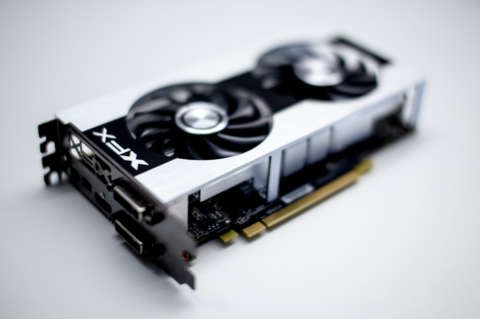
Then there are the manufacturer-specific features. For Nvidia, that means gameplay recording with almost no performance impact via Shadow Play, simple settings set up with GeForce Experience, and compatibility with its Gameworks initiative, which adds visual enhancements like PhysX, HBAO+, and TXAA to games. For AMD, that means simple set up with Raptr, and compatibility with its Mantle API (as used in Battlefield 4), and a driver that lets games speak directly to the hardware, resulting in theoretically better performance. Both manufacturers also give away various games for free when you buy a GPU, should you be after a way to increase your collection.
There's also the matter of Nvidia's SLI technology and AMD's Crossfire technology, which allow you to run more than one GPU simultaneously in order to dramatically increase performance. There are pros and cons to both technologies, the explanation for which would demand an article of its own, but generally, Nvidia's solution is regarded as superior thanks to better driver support. If you're interested in a deep dive into the differences between the two, Tech Quickie has an excellent breakdown.
What to look for: Blower style coolers are better for smaller cases, but--with the exception of Nvidia's all-metal cooler on its GTX 770 and up--third party solutions with multiple fans often result in better cooling. Figure out whether you prefer the likes of Nvidia's Shadowplay or AMD's Mantle technology, and if there's a specific game bundle you're after.
I Still Don't Know What to Get. Can't You Pick for Me?
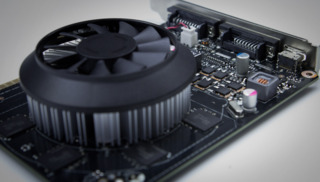
Recommendations as of July 2014.
We sure can! Or, we can at least give you some recommendations. At the low end, it's hard to beat AMD's R7 265, which retails at around $150. It's loaded with 2GB of fast, 256-bit memory and is known for being a great GPU for overclocking. Alternatively, Nvidia's GTX 750 Ti retails at around the same $150 mark. While it isn't as fast as the AMD GPU, it does have the added benefit of not needing an external power connector, which makes it great for smaller builds or for throwing into an existing PC with a weaker PSU. The pick of the bunch at $250 is Nvidia's GTX 760, which performs admirably with the vast majority of games, and overclocks well.
The mid-range is where things begin to get tricky, with both manufacturers having some excellent GPUs around the $300 to $400 price range. With AMD due to release its new Tonga range of GPUs any day now, it's slashing prices, meaning you can pick up its excellent R9 280X with 3GB of 384-bit GDDR5 RAM for as little as $319. If you've got a bit more cash to spend, then Nvidia's GTX 770 goes for around $349. While it comes with only 2GB of memory in cheaper versions, benchmarks have shown it faster than the R9 280X.
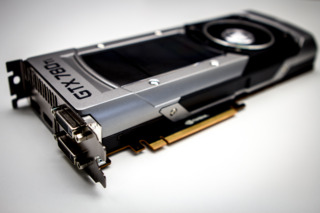
At the high end, it's hard to recommend anything but Nvidia GPUs. While they cost a little more than their AMD counterparts, the GTX 780 ($519) and GTX 780 Ti ($719) will churn through almost anything you throw at them; they're also extremely power efficient, and they feature Nvidia's excellent quiet, all-metal cooler. AMD's high-end GPUs tend to run rather hot by comparison, meaning you've got to work harder to keep your PC cool. Plus, you get access to all of Nvidia's other goodies like Shadow Play and GeForce Experience.
What GPU are you rocking in your PC? And if money were no object, what would be in your dream PC? Let us know in the comments below, and check back next week when we take a look at the wonderful world of CPUs.
